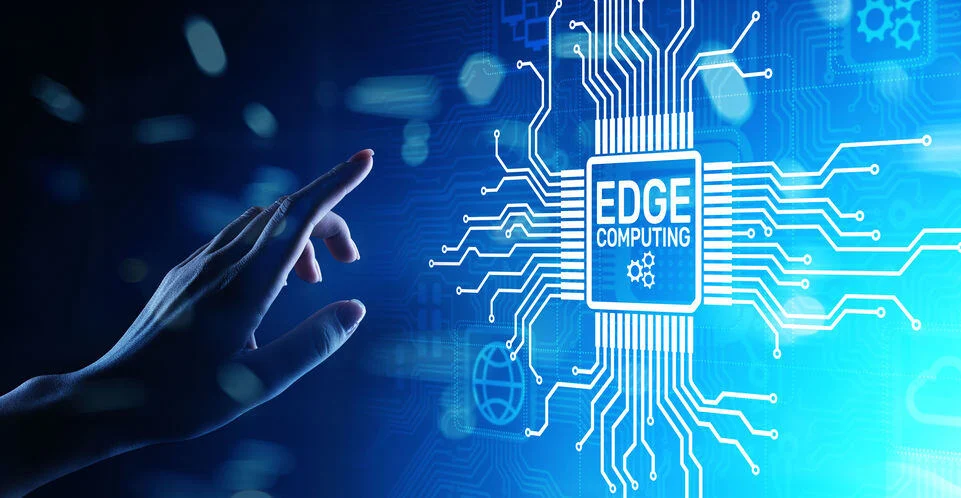The Future of IT Infrastructure is undergoing a significant evolution, propelled by the swift integration of edge computing. As organizations seek enhanced processing speeds, reduced latency, and improved data management, conventional centralized frameworks are facing scrutiny.
Jeff Ready, CEO of Scale Computing, asserts that edge computing is not merely a substitute; it is emerging as the foundation of contemporary IT ecosystems.
With innovations such as Scale Computing’s Kraken release, companies can now implement applications at unparalleled speeds, rendering edge computing more attainable than ever.
However, what factors are instigating this transition, and what will be its long-term effects on businesses?
The Development of IT Infrastructure: Transitioning from Mainframes to Edge Computing
In order to understand the future of IT infrastructure, it is essential to first analyze its historical development. The evolution of IT architecture has undergone several significant phases:
- Mainframe Era (1960s-1980s)- Dominant, centralized computing systems managed all processing tasks.
- The Client-Server Model- It emerged in the 1990s and 2000s, made distributed computing possible, allowing organizations to manage workloads more efficiently.
- Cloud Computing (2010s-Present)- Data is distributed across extensive cloud data centers.
- Edge Computing (Currently Emerging)- Local devices are used for processing, which minimizes latency and lowers bandwidth expenses.
This recurring transition indicates that future systems will progressively depend on edge computing, integrating the most advantageous features of both distributed and centralized architectures.
The Rising Popularity of Edge Computing
Edge computing is quickly becoming popular as companies want faster processing, less delay, and less reliance on the cloud. Sectors like manufacturing and healthcare are using edge solutions for real-time data analysis and IoT (Internet of Things) applications right where the data is created.
Several key factors are accelerating the adoption of edge computing:
Reduced delay- Essential for real-time uses such as IoT, AI, and self-driving systems.
Improved Bandwidth Efficiency- Decreases dependence on cloud data transfers, resulting in cost savings.
Improved Security- Processing data locally reduces the risk of breaches.
Regulatory Compliance- Assists organizations in following data sovereignty regulations.
Jeff Ready, the CEO of Scale Computing, highlights that edge computing goes beyond mere decentralization; it focuses on the smart distribution of workloads.
Scale Computing’s Kraken Release: A Groundbreaking Development for Edge Deployment.
A significant challenge in adopting edge technology has been the deployment of applications. Scale Computing’s newest release, Kraken, addresses this issue by streamlining application management in distributed settings.
Essential Characteristics of Kraken
Instant Application Deployment- Companies can deploy applications across various edge locations with a single click.
AI-Assisted Development- Reduces the obstacles for non-developers to participate in app development.
Unified Fleet Management- IT teams can oversee and modify edge devices from a centralized dashboard.
Ready emphasizes that this user-friendliness will result in a significant increase in edge applications, as various industries begin to recognize the advantages.
Disproving Widespread Misconceptions About Edge Computing
Despite common misconceptions, edge computing is not solely for large corporations or IoT devices; it provides significant advantages for businesses of any size by minimizing latency, enhancing security, and lowering cloud expenses.
Numerous organizations wrongly believe that edge solutions are difficult to implement, whereas contemporary platforms actually facilitate deployment via hyperconverged infrastructure and centralized management tools. The three major misconceptions, identified by Ready, are:
“Edge is Merely a Synonym for On-Premises”
Although edge infrastructure is typically located on-premises, its true strength is found in distributed intelligence. In contrast to conventional on-premises systems, edge computing facilitates immediate decision-making at the point of data creation.
“All Operations Can Be Conducted in the Cloud”
Cloud computing presents certain constraints, particularly for applications in AI, IoT, and real-time analytics. Executing GPU-heavy AI tasks in the cloud can incur annual expenses reaching tens of thousands of dollars, while edge devices provide a more economical solution.
“Insufficient Edge Applications Available”
Industries such as retail, manufacturing, and healthcare are already utilizing edge applications for purposes like inventory management, predictive maintenance, and patient monitoring. With Kraken speeding up application development, this ecosystem is set to grow significantly.
The Impact of VMware and Broadcom: A Driving Force for Edge Adoption?
The fallout between VMware and Broadcom has halted the adoption of edge computing, prompting dissatisfied customers to look for alternatives due to increasing costs and diminishing support. This disruption presents a significant opportunity for edge-centric providers such as Scale Computing to gain market share by offering more flexible and affordable solutions.
The IT sector has experienced significant disruption due to Broadcom’s purchase of VMware, resulting in:
Rising Costs- Numerous small and medium-sized businesses encounter high licensing fees.
Diminished Support- Clients have noted longer response times.
Limitations for Channel Partners- A significant number of managed service providers are exploring other options.
Scale Computing is taking advantage of this trend, establishing itself as a viable alternative to VMware for edge and hyperconverged infrastructure (HCI). Some executives humorously label Broadcom as ‘Badcom,’ indicating a common sentiment of dissatisfaction.
Implications for Businesses
Frank Arnett, the Director of MSP and Strategic Sales at Otava, asserts that the future is in hybrid models. He states, ‘Edge computing will develop in tandem with cloud and quantum computing.’ Companies need to get ready for a mixed infrastructure strategy.
Expert Editorial Comment
The evolution of IT infrastructure is moving towards edge computing. Organizations that adopt this transition promptly will benefit from quicker implementations, reduced costs, and enhanced performance, thereby securing a competitive advantage.
As Scale Computing and other pioneers expand the limits of technology, IT executives need to reevaluate their approaches. Whether utilizing HCI, AI-powered automation, or hybrid cloud-edge frameworks, it is evident that decentralization is a permanent trend.

